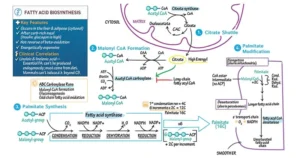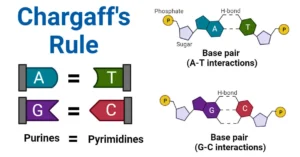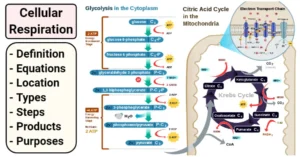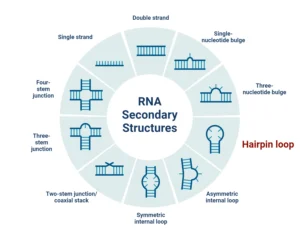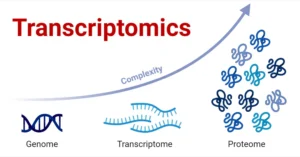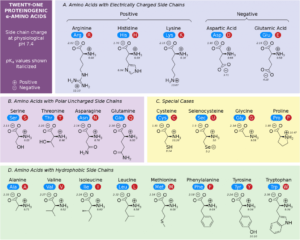De Novo Pyrimidine Synthesis: De novo pyrimidine synthesis is a fundamental cellular process that ensures the production of pyrimidine nucleotides, essential for the integrity and functionality of genetic material and various cellular processes. The pathway’s intricate regulation and connection to diseases make it a subject of ongoing research in the fields of biochemistry and medicine.
1. Overview:
- Definition: De novo pyrimidine synthesis is the biosynthetic pathway responsible for the construction of pyrimidine nucleotides from basic precursors.
- Significance: Pyrimidines are essential components of nucleotides, which are building blocks of DNA, RNA, and other critical biological molecules.
2. Location:
- Cytoplasm: De novo pyrimidine synthesis primarily occurs in the cytoplasm of cells.
3. Route Summary:
- Precursors: The precursors for de novo pyrimidine synthesis are carbamoyl phosphate, derived from glutamine and CO2, and aspartic acid.
- Steps: The pathway involves a series of enzymatic reactions that convert these precursors into the final pyrimidine nucleotides.
4. Processes Involved:
- Carbamoyl Phosphate Synthesis: Synthesis of carbamoyl phosphate from glutamine and CO2.
- Formation of Carbamoyl Aspartate: Aspartic acid reacts with carbamoyl phosphate to form carbamoyl aspartate.
- Formation of Orotidine-5′-Monophosphate (OMP): Carbamoyl aspartate undergoes further reactions to yield orotidine-5′-monophosphate.
- Conversion to Uridine Monophosphate (UMP): OMP is finally converted to UMP through a series of reactions.

5. Key Enzymes and Control:
- Carbamoyl Phosphate Synthetase II: Catalyzes the synthesis of carbamoyl phosphate.
- Aspartate Transcarbamylase: Involved in the formation of carbamoyl aspartate.
- Dihydroorotase: Catalyzes the conversion of carbamoyl aspartate to dihydroorotate.
- Orotate Phosphoribosyltransferase: Converts dihydroorotate to orotidine-5′-monophosphate.
- Orotidine-5′-Monophosphate Decarboxylase: Catalyzes the conversion of orotidine-5′-monophosphate to UMP.
- Regulatory Enzymes: Carbamoyl Phosphate Synthetase II and Aspartate Transcarbamylase are regulated by feedback inhibition.
6. Salvage Pathways:
- Salvage Reactions: Cells can also utilize salvage pathways to recover and recycle pyrimidine bases from the breakdown of nucleotides.
7. Related Diseases:
- Deficiencies: Genetic deficiencies in enzymes of the de novo pyrimidine synthesis pathway can lead to disorders like orotic aciduria.
- Cancer: Dysregulation of pyrimidine synthesis is observed in certain cancers.
8. Importance:
- Nucleotide Synthesis: De novo pyrimidine synthesis is crucial for the production of nucleotides that form the backbone of DNA and RNA.
- Cellular Processes: Pyrimidines are essential for various cellular processes, including DNA replication, RNA transcription, and energy transfer.
9. Future Research:
- Drug Development: Understanding the de novo pyrimidine synthesis pathway is essential for drug development, particularly for targeting cancer cells with dysregulated nucleotide metabolism.
Location of De Novo Pyrimidine Synthesis:
- In Prokaryotes (e.g., Bacteria):
- Cytoplasm: The entire de novo pyrimidine synthesis process takes place within the cytoplasm of prokaryotic cells.
- In Eukaryotes (e.g., Animals and Plants):
- Cytoplasm: The initial three enzymatic stages of de novo pyrimidine synthesis occur in the cytoplasm of eukaryotic cells.
- Mitochondria: The subsequent reactions take place in the mitochondria.
- In Humans:
- Cytoplasm: The first three steps of de novo pyrimidine synthesis occur in the cytoplasm.
- Mitochondria: The later stages of the process, including the conversion of orotate to UMP, occur in the mitochondria.
In most species, including humans, the de novo pyrimidine synthesis process initiates in the cytoplasm of cells. While prokaryotes complete the entire process in the cytoplasm, eukaryotes divide the synthesis between the cytoplasm and mitochondria. This partitioning allows for the coordination of various enzymatic reactions essential for the formation of pyrimidine nucleotides.
Reactions Involved in De Novo Pyrimidine Synthesis:
Carbamoyl Phosphate Synthesis:
- Reaction: Bicarbonate + Glutamine + 2 ATP → Carbamoyl phosphate + Glutamate + 2 ADP + Pi
- Enzyme: Carbamoyl phosphate synthetase-II (CPS-II)
- Description: The pathway begins with the conversion of bicarbonate and glutamine into carbamoyl phosphate. This reaction, catalyzed by CPS-II, utilizes ATP as an energy source.
Formation of Carbamoyl Aspartate:
- Reaction: Carbamoyl phosphate + Aspartate → Carbamoyl aspartate + Pi
- Enzyme: Aspartate transcarbamoylase (ATCase)
- Description: Carbamoyl phosphate reacts with aspartate, producing carbamoyl aspartate. The enzyme ATCase catalyzes this step.
Formation of Dihydroorotate:
- Reaction: Carbamoyl aspartate → Dihydroorotate + H2O
- Enzyme: Dihydroorotase
- Description: Carbamoyl aspartate is converted into dihydroorotate by dihydroorotase without the incorporation of atoms from other substrates.
Formation of Orotate:
- Reaction: Dihydroorotate + NAD+ → Orotate + NADH + H+
- Enzyme: Dihydroorotate dehydrogenase
- Description: Dihydroorotate is oxidized to orotate by dihydroorotate dehydrogenase, requiring NAD+ as a coenzyme.
Formation of Orotidine 5′-Monophosphate (OMP):
- Reaction: Orotate + 5-Phosphoribosyl-1-pyrophosphate (PRPP) → OMP + Pyrophosphate
- Enzyme: Orotate phosphoribosyltransferase (OPRT)
- Description: Orotate is converted into OMP through decarboxylation and the addition of a phosphate group, catalyzed by OPRT.
Conversion of OMP to Uridine 5′-Monophosphate (UMP):
- Reaction: OMP → Uridine 5′-monophosphate (UMP) + CO2
- Enzyme: Orotidine 5′-phosphate decarboxylase (OMP decarboxylase)
- Description: OMP is converted into UMP by the addition of a ribose phosphate group, facilitated by the enzyme OMP decarboxylase.
Important Enzymes and Regulation in De Novo Pyrimidine Synthesis:
Carbamoyl Phosphate Synthetase-II (CPS-II):
- Enzyme Activity: Catalyzes the conversion of bicarbonate and glutamine into carbamoyl phosphate.
- Regulation:
- Positive Regulation: ATP acts as a positive allosteric effector, enhancing CPS-II activity.
- Negative Regulation: UTP acts as a negative allosteric effector, inhibiting CPS-II activity.
Aspartate Transcarbamoylase (ATCase):
- Enzyme Activity: Catalyzes the reaction between carbamoyl phosphate and aspartate to form carbamoyl aspartate.
- Regulation:
- Positive Regulation: ATP positively influences ATCase activity.
- Negative Regulation: CTP negatively affects ATCase activity.
Dihydroorotate Dehydrogenase:
- Enzyme Activity: Catalyzes the conversion of dihydroorotate to orotate.
- Regulation:
- Inhibition: Brequinar, a chemotherapy drug, inhibits dihydroorotate dehydrogenase.
Orotate Phosphoribosyltransferase (OPRT):
- Enzyme Activity: Catalyzes the conversion of orotate to orotidine-5′-monophosphate (OMP).
Orotidine 5′-Phosphate Decarboxylase (OMP Decarboxylase):
- Enzyme Activity: Catalyzes the conversion of OMP to Uridine 5′-monophosphate (UMP).
Regulation Overview:
- The de novo pyrimidine synthesis pathway is subject to feedback regulation to ensure that the production of pyrimidine nucleotides is finely tuned to cellular needs.
- ATP and UTP play pivotal roles in modulating the activity of CPS-II, affecting the overall rate of the pyrimidine synthesis pathway.
- ATCase is influenced by allosteric regulation from ATP and CTP, contributing to the coordination of aspartate utilization in the pathway.
- Dihydroorotate dehydrogenase, a key enzyme in the pathway, is susceptible to inhibition by the chemotherapy drug Brequinar, which can be used as a therapeutic strategy.
These regulatory mechanisms ensure that pyrimidine synthesis is appropriately adjusted based on the cellular demand for nucleotides and maintain cellular homeostasis.
Pyrimidine Synthesis via Salvage Pathways:
Overview:
- Salvage Routes: Cells have salvage pathways for pyrimidine nucleotide production in addition to de novo synthesis.
- Reduction of Need: Salvage pathways reduce the reliance on de novo synthesis by recycling nucleobases generated during DNA and RNA breakdown.
Salvage Enzymes:
- Recycling Nucleobases: Salvage pathways involve the recovery of free pyrimidine bases (cytosine, uracil, and thymine) through specific salvage enzymes.
Cytidine Salvage:
- Enzyme – Cytidine Deaminase:
- Action: Converts cytidine into uridine.
- Result: Enables the salvage of cytidine for the synthesis of pyrimidine nucleotides.
Uridine Salvage:
- Enzyme – Uridine Phosphorylase:
- Action: Converts uridine into uracil.
- Result: Salvages uridine for pyrimidine nucleotide synthesis.
Thymidine Salvage:
- Enzyme – Thymidine Kinase:
- Action: Phosphorylates thymidine to produce thymidine monophosphate (TMP).
- Result: Salvages thymidine for pyrimidine nucleotide synthesis through a separate mechanism.
Overall Impact:
- Reduction of Synthesis Burden: Salvage pathways reduce the demand for de novo synthesis by reusing nucleobases from DNA and RNA breakdown.
- Efficient Recycling: The actions of specific salvage enzymes allow the efficient conversion of cytidine, uridine, and thymidine into components necessary for pyrimidine nucleotide synthesis.
Salvage pathways play a crucial role in pyrimidine nucleotide metabolism, offering an efficient means of recycling free pyrimidine bases and reducing the burden on de novo synthesis. The specific actions of enzymes like cytidine deaminase, uridine phosphorylase, and thymidine kinase enable the cell to salvage and repurpose nucleobases, contributing to the overall balance of pyrimidine nucleotide pools in the cell.
Associated Diseases with De Novo Pyrimidine Synthesis Dysregulation:
Orotic Aciduria:
- Type: Autosomal Recessive
- Cause: Poor de novo pyrimidine production
- Symptoms:
- Orotic acid accumulates in urine.
- Enzyme deficiency in CPS-II or OPRT.
- Manifestations include anemia, growth retardation, and urinary system anomalies.
- Treatment: Uridine or uridine triacetate supplements are used to bypass the problematic stage in the pathway.
Dihydropyrimidine Dehydrogenase (DPD) Deficiency:
- Type: Enzyme Deficiency Disorder
- Function of DPD: Involved in the breakdown of pyrimidine bases.
- Implications:
- Individuals with DPD deficiency struggle to metabolize and eliminate certain medications.
- Significant toxicity may occur when administering specific chemotherapy drugs, such as 5-fluorouracil.
- Clinical Impact: This deficiency can lead to complications during chemotherapy treatment, affecting the ability to safely administer certain medications.
Dysregulation of de novo pyrimidine synthesis can result in rare genetic disorders such as orotic aciduria and enzyme deficiencies like DPD deficiency. These conditions highlight the intricate balance required for proper pyrimidine metabolism and emphasize the clinical consequences when this balance is disrupted. The associated symptoms and complications underscore the importance of understanding and addressing disorders related to pyrimidine synthesis for effective medical management.
Significance of Pyrimidine Synthesis:
Building Blocks for DNA and RNA:
- Essential Role: The basic process of pyrimidine synthesis provides the fundamental building blocks required for the synthesis of both DNA and RNA.
- Nucleotide Components: Pyrimidine nucleotides, including cytosine, uracil, and thymine, are critical components of DNA and RNA.
Cellular Growth and Proliferation:
- Balancing Act: Proper pyrimidine nucleotide synthesis is essential for maintaining a balance that allows cells to grow, proliferate, and function normally.
- Cellular Homeostasis: Disruptions in pyrimidine synthesis can have serious effects on cellular homeostasis, impacting overall cell health.
Implications for Diseases:
- Connection to Diseases: Dysregulation in pyrimidine synthesis is implicated in the emergence of various illnesses.
- Clinical Consequences: Disorders related to pyrimidine synthesis can lead to severe clinical consequences, emphasizing the importance of maintaining the proper balance.
Understanding De Novo Pyrimidine Production:
- Practical Implications: Understanding the complexities of de novo pyrimidine production is practical for medical purposes.
- Target for Therapies: Potential treatment approaches, especially in diseases like cancer, may involve targeting specific enzymes involved in the pyrimidine synthesis process.
Potential Treatment Approaches:
- Enzyme Inhibition: In diseases like cancer, targeting enzymes such as CPS-II or dihydroorotate dehydrogenase in the pyrimidine synthesis pathway can be a potential strategy.
- Preventing Cell Proliferation: Inhibiting nucleotide production can prevent the rapid growth and proliferation of cancer cells.
Understanding the significance of pyrimidine synthesis goes beyond fundamental biochemistry. It has direct implications for cellular functions, diseases, and potential therapeutic approaches. The intricate balance required for proper nucleotide synthesis underscores the importance of exploring targeted interventions, especially in the context of diseases like cancer, where uncontrolled cell proliferation is a key hallmark.
Conclusion:
In conclusion, the de novo pyrimidine synthesis pathway is a critical process responsible for producing the essential pyrimidine nucleotides vital for the synthesis of DNA, RNA, and other essential biological components. This pathway involves the conversion of simple precursors into pyrimidine nucleotides through a series of enzymatic reactions.
Salvage pathways complement de novo synthesis by recycling nucleobases from degraded DNA and RNA, emphasizing the importance of maintaining a balanced nucleotide production for cellular functions. Dysregulation of pyrimidine synthesis can lead to various diseases, underlining the significance of understanding and regulating this complex biochemical pathway.
The equilibrium in nucleotide production is crucial, and disruptions in pyrimidine synthesis can have profound effects on cellular physiology. This understanding not only influences fundamental research in biochemistry but also has implications for developing treatment strategies, especially in conditions like cancer.
Continued research in this field promises to unveil more insights into the regulation of pyrimidine synthesis and its pivotal role in cellular physiology. As our understanding deepens, it opens avenues for innovative therapeutic interventions and contributes to advancing our knowledge of fundamental biological processes.

